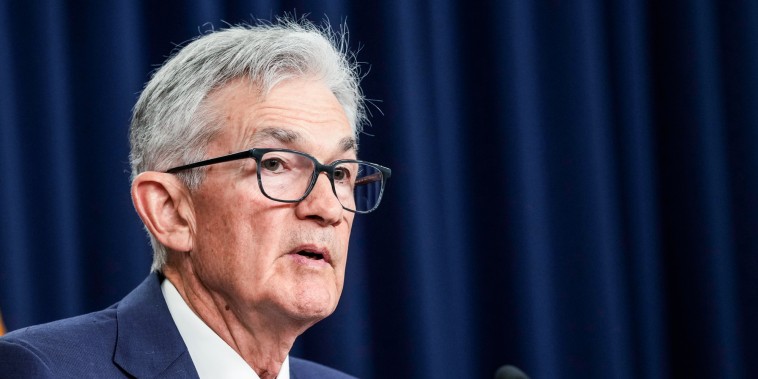In the midst of the ever-evolving economic landscape, Federal Reserve Chair Jerome Powell’s recent statements have garnered significant attention from economists and policymakers alike. Powell’s assurance that there is no sign of stagflation in the U.S. economy has sparked discussions regarding the current state and future outlook of the country’s economic growth.
Stagflation, a term that combines stagnation and inflation, is a scenario that poses a challenge to central banks and policymakers as they seek to balance economic indicators and maintain stability. With stagnant economic growth coupled with high inflation rates, an economy can face various complexities in terms of monetary policy and fiscal measures.
Powell’s remarks provide insight into the Federal Reserve’s assessment of the U.S. economy’s current trajectory. By addressing concerns regarding stagflation, Powell aims to instill confidence in the market and reassure stakeholders about the central bank’s ability to navigate potential economic challenges.
The absence of stagflation signals a sense of stability in the U.S. economy, indicating that the current inflationary pressures are likely transitory and not indicative of a prolonged period of both high inflation and low growth. This assertion aligns with the Federal Reserve’s view that the recent surge in inflation is temporary, driven by factors such as supply chain disruptions and pent-up demand.
Powell’s stance on stagflation also underscores the Federal Reserve’s commitment to its dual mandate of maximum employment and price stability. By emphasizing the absence of stagflation, Powell seeks to convey the central bank’s readiness to adapt its monetary policy stance to support sustainable economic growth while keeping inflation in check.
In light of Powell’s comments, market participants and economists are closely monitoring key economic indicators such as employment data, inflation rates, and GDP growth to assess the resilience of the U.S. economy. The Federal Reserve’s upcoming policy decisions will be guided by a data-driven approach, taking into account evolving economic conditions and the potential impact of external factors on the domestic economy.
As the global economic landscape continues to face uncertainties and challenges, Powell’s reassurance regarding the absence of stagflation provides a sense of clarity and direction for policymakers and market participants. By acknowledging the current economic dynamics and emphasizing the Federal Reserve’s vigilance, Powell aims to steer the U.S. economy towards a path of sustainable growth and stability.
In conclusion, Powell’s remarks on the absence of stagflation in the U.S. economy present a nuanced perspective on the country’s economic outlook. By addressing concerns surrounding stagnant growth and high inflation, Powell highlights the Federal Reserve’s proactive stance in managing economic risks and ensuring a balanced approach to monetary policy. As stakeholders navigate the complexities of the economic landscape, Powell’s guidance serves as a beacon of certainty in an era of uncertainty.

